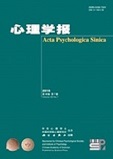Against the backdrop of fierce competition in the workplace, conflicts of interest and interpersonal frictions in enterprises occur frequently. With cold violence increasingly prevalent, workplace ostracism raises extensive concern for its frequent occurrence, invisibility, and long-term hurtfulness. Compared to Western society, the traditional tolerance and restraint of Chinese culture intensifies the hurtfulness to those who are ostracized. Additionally, the fuzzy work-family boundary of Chinese culture displaces this hurtfulness onto their family through their emotions, attitudes, and behavior, which impairs their lives and future work.
Previous studies have found that workplace ostracism has negative effects on the inner workings of an organization from the perspectives of psychology, attitude, behavior, and performance. However, the spillover effect of workplace ostracism on organizations is rarely discussed. Compared with Western society, Chinese employees maintain relatively vague boundaries between work and family, and the bad experiences of employees in the workplace are more likely to spillover to the family field through employees’ psychological and emotional states, thus affecting their family life and follow-up work. Based on the conservation of resources theory, this paper discusses the spillover effect of workplace ostracism on family undermining and family satisfaction from the perspectives of decreasing positive spillover and increasing negative spillover. Individuals feel threatened and stressed when they lose resources. In light of this, this study constructs and verifies the mediating effect of work stress between workplace ostracism and family undermining and family satisfaction. Furthermore, this study also verifies the boundary effect of individual need for affiliation and work-home segmentation preference in spillover.
Two samples were collected to test the hypotheses. For the first sample, we collected the data at three timepoints with one-month intervals from 16 tourism-service enterprises in Guizhou and Shandong provinces. A total of 264 effective questionnaires were returned. For the second sample, with a one-week interval, the survey was administered to five tourism-service enterprises in Guizhou province, and the final sample consisted of 239 effective questionnaires. We employed hierarchical multiple regression and bootstrapping analyses to test the hypotheses. The results indicated the following: (1) workplace ostracism had a positive effect on family undermining and a negative effect on family satisfaction; (2) workplace stress mediated the relationship between workplace ostracism and family undermining and family satisfaction; (3) need for affiliation positively moderated the effect of workplace ostracism on work stress, while moderating the indirect influence of workplace ostracism on family undermining and family satisfaction via work stress; (4) work-home segmentation preference moderated the effect of work stress on family undermining and family satisfaction, while moderating the indirect influence of workplace ostracism on family undermining and family satisfaction via work stress.
This study has several theoretical and practical implications. Based on the conservation of resources theory, this study demonstrates an increase in negative spillover and a decrease in positive spillover; moreover, this study maps the antecedent variables of family undermining and family satisfaction in the workplace. Furthermore, this study shows that work stress is a key transmission mechanism by which workplace ostracism penetrates the work-family interface and causes a spillover effect, which is a response to the a calling for disclosing “the black box” of the spillover effect of workplace ostracism. Finally, by constructing a moderated mediation model and investigating the influence of workplace ostracism on individuals with a unique need for affiliation and work-home segmentation preference, this study specifies the boundary conditions of the spillover effect for workplace ostracism and contributes valid evidence for the conservation of resources theory. In practice, our study can help service enterprises and their managers to understand the spillover effect of workplace ostracism on the family domain more accurately, and to reduce the negative impact of workplace ostracism by taking effective measures, such as building a harmonious, tolerant, and friendly organizational cultural atmosphere.




